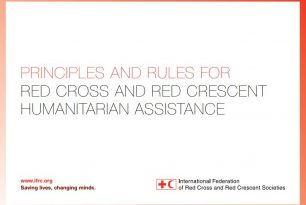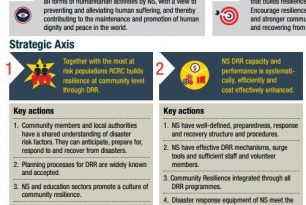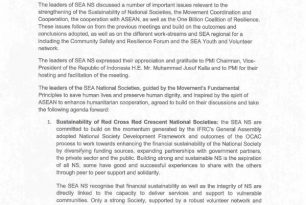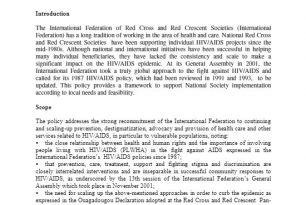
0/5 (1) Rate This! Please rate this content
![]()

Preparing for Disasters with Mr. Radar is a video animation produced in English and Thai language in order to promote learning among children in Thailand on immediate and long-term climate risks.
Through this animation, children as part of community are informed to act in preparation for future disasters, and their knowledge will have long-term relevance to contribute to the safety and well-being of their communities. In a wider scale, the animation could help empower the community to take disaster risk reduction, preparedness and resilience actions.
![]()

These Principles and Rules for Red Cross and Red Crescent Humanitarian Assistance govern National Societies and their International Federation in international humanitarian assistance (excluding armed conflict, internal strife and their direct results).
These Principles and Rules recognize the importance of strengthening organizational, coordination and delivery capacities of National Societies, to respond to the increasing number and complexity of disasters and the growing number of vulnerable people. They call for greater collective learning, adaptation, innovation and leadership to ensure that the Movement achieves greater humanitarian impact. These Principles and Rules encompass preparedness for response, disaster relief and early recovery activities. They complement commitments to disaster risk reduction and seek to encourage National Societies to link relief, recovery and development. They establish a coordinated and agreed approach to quality and accountability, and recognize partnerships with public authorities, humanitarian actors and other organizations external to the Movement. These Principles and Rules are adopted within the statutory framework of the Movement.
![]()

This Strategy is intended to support National Societies (NS) strategic decision-making and planning as well as align local and national level disaster risk reduction. Having a region-wide alignment of actions will allow NS to work better together and support each other in times of disasters and crisis. This document will also support the planning of IFRC Secretariat Support to NS at various stages of the NS Development.
![]()

The outcome document resulted from the 13th Southeast Asia Red Cross Red Crescent Leadership meeting that was held in Jakarta, Indonesia, on 27-28 September 2016, with the participation of the leaders of the National Societies of Brunei Darussalam, Cambodia, Indonesia, Lao, Malaysia, Myanmar, Philippines, Singapore, Thailand, Timor-Leste and Viet Nam. The meeting was hosted by PMI of Indonesia ans supported by ICRC and IFRC.
The meeting saw the discussions of issues relevant to strengthening of the sustainability of National Societies, the Movement coordination and cooperation, the cooperation with ASEAN, as well as the One Billion Coalition for Resilience.
![]()

This IFRC Health Advocacy Report depicts the stark reality of what it means to be an injecting drug user and living with HIV. It examines the prevention, treatment, care and support needs of this most at-risk population and the IFRC’s response to their plight. It also offers National Societies and the reader an advocacy tool that can be used for years to come. The aim? To remind governments and National Societies of the obligation to respect the human rights of injecting drug users at risk of, or living with, HIV. Although our focus is global, we place a special emphasis on Eastern Europe and Central Asia where the situation is becoming increasingly dire.
![]()

The purpose of this document is to outline the rationale for harm reduction programmes. It outlines generic approaches that National Societies can adapt to the realities of their countries in the development and implementation of harm reduction programme and in conducting advocacy for the acceptance and realization such programmes.
![]()

The International Federation HIV/AIDS Policy, 2002, approved by the Governing Board, provides a framework to support National Societies in the implementation of HIV/AIDS related activities. It states, “Guided by sound public health and humanitarian principles, promote and where appropriate facilitate harm reduction strategies for high risk behaviours and traditional practices, including advocacy for law reform as necessary”.
![]()